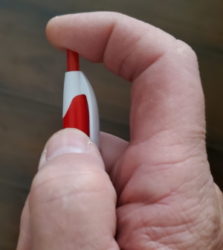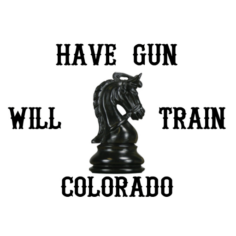 Trigger Finger an important part of the shooting equation
Trigger Finger an important part of the shooting equation
In general, the term trigger control is used to describe the act of moving the trigger and firing the gun without disturbing your aim. All of the fundamentals are rolled into firing the shot, but the two biggest fundamentals are aiming and trigger control, in that order. How you move the trigger can work for or against you. The best method of controlling a trigger, for all levels of shooters, is to move the trigger straight to the rear, firing the gun without disturbing your aim. Try using the tip of a pen. Hold it in your finger and practice like it is your trigger. Not fast like my old mentor Patrick Watts used to tell me to take out the slack and press.
It starts with the placement of the trigger finger on the trigger. The middle of the pad on your fingertips is the most sensitive part of your finger and the preferred position for finger placement ( for the striker-fired handguns (Glock, Smith & Wesson, Springfield, Ruger, Sig). For Revolvers, it takes more finger usually all the way to the first crease in your finger called the power crease. But maintaining perfect aim as the shot is fired is much more important than putting the trigger finger in a preferred position on the trigger. Your best contact point might not be the same as the shooters beside you. How do you find it? Try this dry-firing exercise.
Drill of the Week: The Wall Drill
The Wall Drill was developed by George Harris and is one of the most effective ways to perfect your shooting fundamentals.
Like any dry-fire drill, it is critically important that you follow proper precautions. First, you must always obey the Cardinal Rules of Firearms Safety even during dry-fire practice. Also, all weapons must be completely unloaded and double-checked before the start of this drill.
Once you have cleared your weapon and verified both visually and physically that it is empty (twice), remove all ammunition from your training area and find a wall that can serve as a proper backstop in case of an accident. The wall should be blank, with no visual distractions and most importantly nothing to aim at during the drill.
Some people like to use dummy rounds to protect the internal parts of your handgun from excessive and unnecessary wear. Check your owner’s manual for dry firing information on your gun.
Holding your unloaded pistol in a normal shooting grip and stance, press the muzzle to the wall until it just barely makes contact, then back off about an inch. Because you are using a blank wall as your backstop, you effectively have no target. There is nothing for you to focus on except your front sight.
From this position, practice your trigger manipulation. The goal is to press the trigger straight back with consistent pressure until the shot breaks without disturbing your sight alignment throughout the process. Remember, that is the key to accuracy a proper trigger press that doesn’t mess up your sight picture.
If your front sight moves around or hops as the trigger breaks, slow down and pay more attention to your grip and finger movement. Are you putting pressure on the grip with your other fingers as you press the trigger? Are you pressing the trigger too fast or too hard, causing it to move at the last moment? Just work on keeping everything still except your trigger finger, and move your finger in a slow, smooth, relaxed trigger press.
Practicing this and other drills will make you a better shooter and as you practice you will see the improvement. As always I am available for help and private shooting sessions.
Other Articles of Interest:
